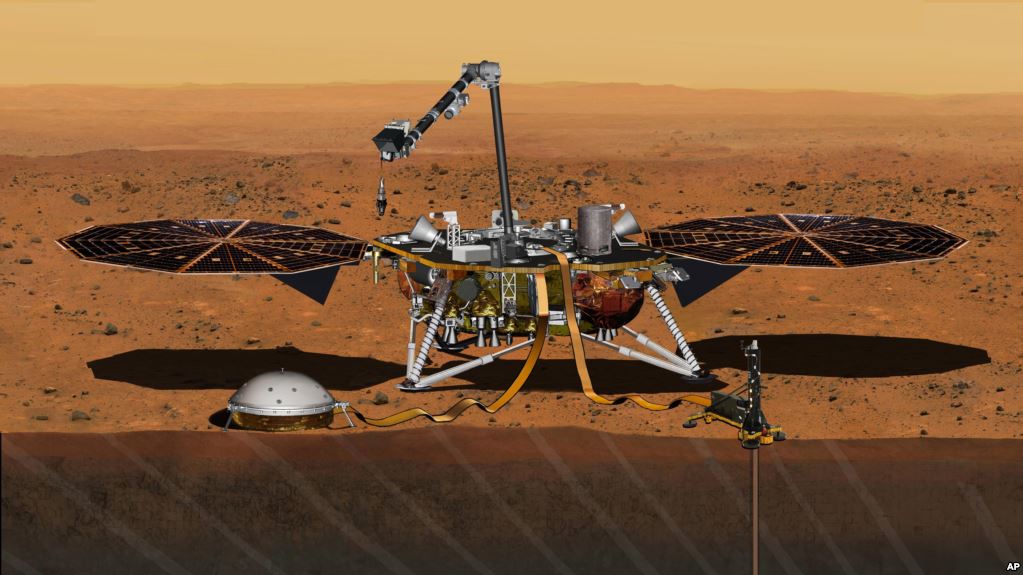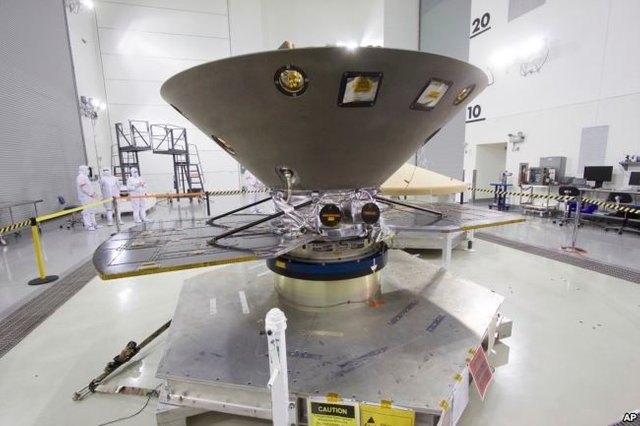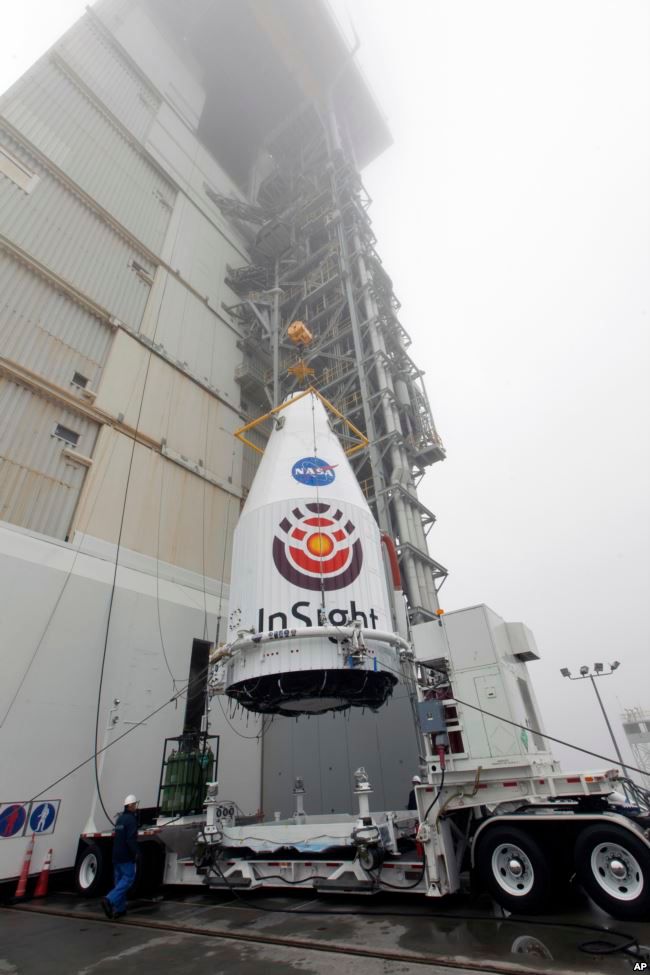New NASA Mars Mission Will Study Deep Under Planet's Surface

NASA, the American space office, is sending an automated researcher to Mars. It will burrow further than at any other time to contemplate the planet's topographical action.
The Mars InSight rocket dispatches May 5. On Mars, the rocket will utilize logical instruments to take the main estimations of "marsquakes," or shudders on Mars. It will likewise quantify the roundabout development of Mars on its pivot to better comprehend the size and cosmetics of its center.
The shuttle's instruments will allow researchers "to gaze intently at profound into the planet," said Bruce Banerdt. He is with NASA's Jet Propulsion Laboratory and the mission's main researcher.
The $1-billion, joint U.S.- European mission denotes the principal investigation of within Mars. Researchers trust the examination will enable them to see how Mars shaped 4.5 billion years back.
Mars is littler and less geographically dynamic than Earth. On Earth, land developments after some time have changed the planet's unique cosmetics.
Mars, however, has more confirmation of its initial advancement, Banerdt said.
Amid the dispatch, InSight will likewise take two little satellites with it. After liftoff, the satellites will break free and afterward take after the shuttle for a half year as it goes to Mars. The satellites won't stop at Mars, however. Rather, they will fly past the planet.
Researchers call the two satellites CubeSats. Their motivation is to test whether they can furnish a correspondence connect with InSight as it arrives on Mars on November 26.

Understanding will dispatch from focal California's Vandenberg Air Force Base. It will be the first occasion when that NASA has propelled a mission to another planet from some place other than Florida's Cape Canaveral.
The outing to Mars will be troublesome. Just 40 percent of rocket that have attempted to achieve the red planet have made it. The United States is the main nation to have effectively landed and worked shuttle on Mars.
The first run through was in 1976, with the Viking 1 and 2 shuttle. The latest arrival was in 2012, by the Curiosity meanderer. A wanderer is a space investigation vehicle intended to move over the surface of a planet.
The InSight will utilize a parachute and motor firings to bring down itself to Mars. Researchers foresee it will take seven minutes for the rocket to enter the air of Mars and after that arrive on the planet.

In any case, Banerdt says arriving on Mars with a shuttle that isn't significantly greater than two office work areas won't be simple.
Once at first glance, InSight will dive just about five meters into the planet's surface. In the meantime, an automated arm will put a logical instrument that measure shakes on Mars' surface. It will distinguish the planet's vibrations.
Understanding stands for "Inside Exploration utilizing Seismic Investigations, Geodesy and Heat Transport." It weighs 694 kilograms. It has three legs, and won't have the capacity to move around.
Knowledge's logical mission is like NASA's Apollo program in the late 1960s and mid 1970s. Around then, Apollo space explorers delved more than two meters into the moon's surface with the goal that researchers back home could gauge the moon's underground stream of warmth.
Prior Mars missions have burrowed just beneath the surface to inquire about the red planet's stones, minerals, climate and attractive fields. In any case, Banerdt says researchers have never inspected any more profound into the surface.
"Mars is as yet a really puzzling planet," Banerdt said. "Indeed, even with all the concentrate that we've done, it could toss us a curveball."